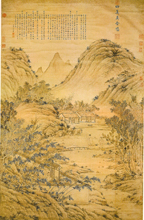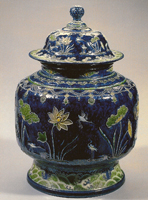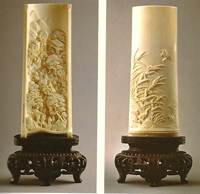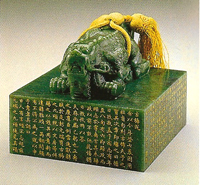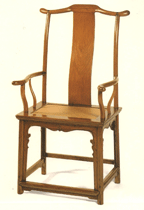Dr. Wei Yang's Blog (2012)
Be ware of the Problematic China-Based Art Market. Many art owners ask me about the possibility of selling their Chinese art work in the China-base auction houses. Encouraged by some art market reports, most believed that selling Chinese antiques in China is a fabulous investment opportunity. While aiming for providing sound marketing guidance without hurting the feelings of these enthusiastic Chinese art sellers, I often comment on the current China-based art market in an euphemistic way: "Get to know the market before you enter it." Since I am in a complete agreement with Abigail Esman's analysis of the China-based art market in her thoughtful piece, China's $13 Million Art Fraud --And What It Means to You (Forbes, Aug. 13, 2012), I would enourage Chinese art sellers or buyers to read the article before you dive into the China-based art market.
Understand Chinese Art Market 2012
China is now the world's biggest market for art and antiques, ending the USA's decades of domination.
- Fake Fan Zeng Paintings (Reported by Zhu Shijuan, Jinan Daily, Oct. 29, 2012): Artist Fan Zeng recently claimed that 99.9% of the paintings bearing his signature and seals circulating on the current market are fakes. Fan said that he usually paints 20 to 50 paintings a year rather than hundreds of paintings reported by the press.
- China-Based Art Market: China became the most active art market, replacing the dominance of USA. The International Art Market in 2011 reports that China's share of the global art market rose from 23% in 2010 to 30% in 2011, forcing the United States, with 29%, into second place. The UK has a 22% market share, remaining third. France holds 6% market share. read more
- Chinese Buyers (Reported by Enid Tsui in Hong Kong): In 2010, nearly half the buyers at Sotheby's Hong Kong auctions were mainland Chinese. However, Sotheby's has reported a sharp drop in mainland Chinese participation in its Hong Kong Spring sales of 2012. Roughly 20-25% of the $316 m. sales from the April auction sale, compared with a 44% of the $411 m. sales recorded in September 2011, was reported.
- Questional Auction Sales in China (Reported by Jan Dalley). After a survey of 250 auction houses, the Chinese Association of Auctioneers (CAA) found that purchases above RMB 10m in the sales of autumn 2010, a full 40% had not been paid for by April 2011. It means that almost half of the sales were not real sales. CAA also reported that 52% "buy-ins" in Chinese auctions. Some auction houses adopted a new practice that a hefty deposit for the right to bid for high-priced items is in action.
- Soft Chinese Contemprary Art Market (Reported by Anders Petterson and Yu Chen): Recent findings suggest that Chinese Contemporary art market is slowing down in 2012 after 3 years of rapid growth. The ArtTactic Confidence Indicator has decreased 5.7% from 80 in November 2011 to 76 in May 2012. 2011 was a record year for the Chinese art market, up 34% from 2010, based on the results from teh Top 4 auction houses.
- Private Sale of Asian Art: Leading western Auction House, such as Christie's and Sotheby's, woo Chinese buyers. Exhibitions for the rivate sale of art specifically for the Asian market and appointments of Chinese representatives to develop new clients in Asia become the new marketing forcus. Western art galleries will likely follow the lead.
